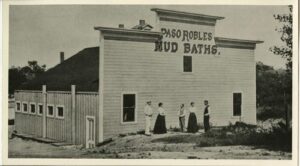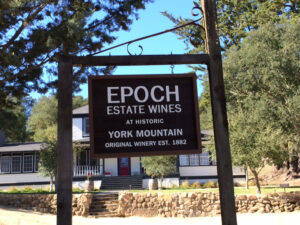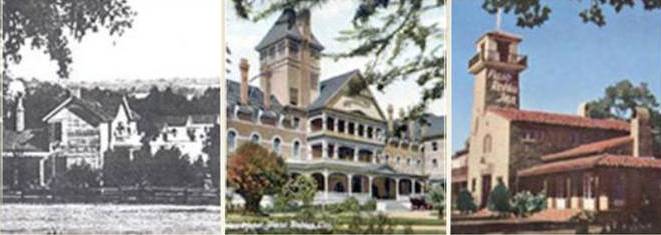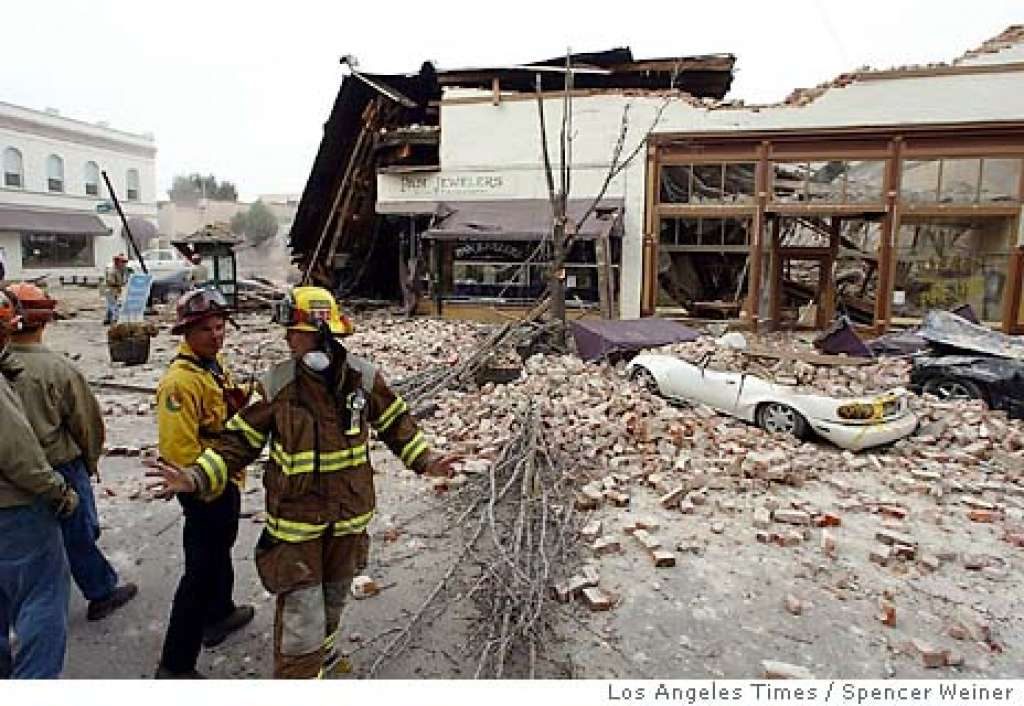On March 11th, 2019, Paso Robles will be celebrating its 130th birthday and since the town is so near and dear to Michael and me I am paying tribute to it this week! People always ask how we came to settle in Paso Robles. Well, the truth is it started as a compromise. I went to college in southern California. Whittier College (GO POETS!) Ranked as one of the top private liberal arts schools in America, most people have only heard of it for two reasons. One Nixon went there and two we were an epicenter of a 6.4 earthquake on October 1, 1987.
When Mike and I decided we wanted to retire to California, he wanted northern and I wanted southern. I thought I should win out since I knew people in southern CA, but he wanted the wine. So we picked the central coast. Without knowing there was a wine country. We figured it was 3 hours in each direction and we both would be happy. But when we started planning our first vacation to check out the region, we found wine! And not only wine, but exceptional wine. A growing wine region filled with phenomenal people and exceptional views. It was love at first sight! And our hearts have been there ever since and now for 6 vintages, so is our winery!
I hope you enjoy!
 Paso Robles, or officially El Paso de Robles, is within the San Luis Obispo County. When translated it means “The Pass of the Oaks.” It is centrally located 3 hours north of Los Angeles and 3 hours south of San Francisco. Although with LA traffic, it can take considerably more time. It sits at an average of 740 feet above sea level, but ranges between 675 and 1,100. The city is a short 20 minute drive to the Pacific Ocean. There are beautiful rolling hills on east side, while the Santa Lucia Coastal Range is on the west side. The infamous San Andreas Fault is approximately 30 miles to the east.
Paso Robles, or officially El Paso de Robles, is within the San Luis Obispo County. When translated it means “The Pass of the Oaks.” It is centrally located 3 hours north of Los Angeles and 3 hours south of San Francisco. Although with LA traffic, it can take considerably more time. It sits at an average of 740 feet above sea level, but ranges between 675 and 1,100. The city is a short 20 minute drive to the Pacific Ocean. There are beautiful rolling hills on east side, while the Santa Lucia Coastal Range is on the west side. The infamous San Andreas Fault is approximately 30 miles to the east.
Since the very beginning, Paso Robles has been known as a place to rejuvenate and relax. The native Sal-In-An Indians called the region “the Springs,” and in the 1700s they shared the secret health benefits of the regions multiple thermal waters with Spain’s Franciscan padres. The padres, in turn, planted the region’s first vineyards and taught the Indians about cattle ranching, farming and winemaking. Indeed, the Mission-era fermentation vats can still be seen at nearby Mission San Miguel.
The three founders of Paso Robles were Daniel Blackburn, James Blackburn and Drury James. The three men were 49ers- they came to California in search of gold. And it, at least in their eyes, was definitely the wild wild west! One was a vigilante, one a rancher and capitalist with several business interests and one was the uncle to the famous outlaw Jesse James.

The two brothers, Daniel D. and James H. Blackburn were born in Virginia and carpenters in Illinois before coming to California. Daniel also was a partner in a meat-packing business in Illinois prior to traveling cross country to find his riches in California. Dury James was a native Kentuckian and a veteran of the Mexican war.
The brothers arrived in August of 1849 and mined for a short three months. Doing exceptionally well, it was documented that each brother left with over $3,000.
Daniel Blackburn chose to use his money and begin farming potatoes and other crops while James built a sawmill and became a partner in a general store in town. However in 1856, the sawmill burned down. At this point, James also decided land was a better option and bought the 26,000 acre El Paso de Robles Rancho for $8,000. This ranch included all the area that now encompasses Templeton and Paso Robles.
In 1859, Daniel Blackburn, decided to take some troubled times into his own hands and became Sheriff. The regular county sheriff stepped aside and let Blackburn and the vigilantes made many arrests and even drove the infamous Jack Powers out of the state.
Drury James came to Paso Robles on a different path than the Blackburns. He originated in Missouri and arrived in Placerville (then called Hangtown) in August. After mining all Spring, he moved onto the cattle business, supplying the beef to miners traveling almost the entire state, from Santa Clara Valley to the gold fields and all the way down to Los Angeles. It was during one of these cattle runs that he first visited Paso Robles.
In 1860, he along with a business partner brought 2,500 cattle and purchased 10,000 acres in La Panza area near the Carrisa. The Blackburns and his paths crossed and ultimately in 1866, he and Daniel Blackburn married sisters, Luisa and Cecilia Dunn in a double ceremony at Mission San Luis Obispo.
Paso Robles was beginning to make a small name for itself at this time. A bathhouse and a hotel that could house 50 guests was built near the hot springs on the corner of 10th and Spring Street.

Settlers of European descent joined the Native American, Mexican and Spanish residents in farming the region. Meanwhile, tourists came in greater numbers to enjoy “El Paso de Robles Hot and Cold Sulphur Springs and the Only Natural Mud Baths in the World,” which had been developed and advertised by the Blackburns and James.
In 1868, Drury James received a visitor. His infamous nephew, the outlaw Jesse James, although Drury denied he knew anything about his Jesse’s illegal ways. The following year, Drury bought a half interest in the Paso Robles hotel and bathouse along with the surrounding 4,300 acres surrounding it and moved to the village itself.
Being the shrewd business men the three of them were, when they heard that a railroad would be reaching the area, they laid out the city of Paso Robles in 1886, and threw a rip roaring old western barbeque on Nov. 17th 1886 to auction off lots of land. One year later, the town had a population of 500 people and became the second incorporated city in the county on Feb. 25, 1889.
With the population “booming” and the train coming, they announced plans to build a three story hotel, as well as an extensive bathhouse over the sulphur springs. Their dream was to build a planned spa community.
Construction, as you would assume, did not go very smoothly and the building was left in partial completion for several months. A year later, a new company was developed and building began again. The El paso de Robles Springs Company, opened its doors on October 12, 1891, with Drury James as the major shareholder. Although Drury James gave up the hotel business after a few years, the El Paso de Robles hotel became a renowned spa had attracted many well known guests.
The 1880s also welcomed the city’s first commercial wineries. Andrew York established  Ascension Winery at what is now Epoch/ York Mountain Winery. The Nerellis, Dusis, Martinellis, Busis, Vostis and Bianchis are just some of the other families that launched Paso Robles wineries in the early twentieth century. Paso Robles was born March 11, 1889, less than three years after the arrival of the Southern Pacific railroad in that town.
Ascension Winery at what is now Epoch/ York Mountain Winery. The Nerellis, Dusis, Martinellis, Busis, Vostis and Bianchis are just some of the other families that launched Paso Robles wineries in the early twentieth century. Paso Robles was born March 11, 1889, less than three years after the arrival of the Southern Pacific railroad in that town.
In 1892, The first school was opened and was located on the current site of Marie Bauer School. In 1913 electricity reaches Paso Robles and in 1914 Rancho San Ignacio was established and it was the first land purchased for the purpose of vineyards.
Paso Robles, at this time, was really an Almond producing city. By 1920, they had 25,000 acres of land dedicated to almond trees and became known as the “Almond Capital of the World.”
In the 1920s, more Paso Robles saw another blip of popularity when Ignacy Paderewski, the famous Polish statesman and concert pianist, purchased 2,000 acres and planted Petite Sirah and Zinfandel on his Rancho San Ignacio Vineyard in the Adelaide area west of Paso Robles. He would regularly perform at the Paso Robles Inn, which in turn brought such famous guests as Jack Dempsey, President Theodore Roosevelt, Douglas Fairbanks, Boris Karloff, Bob Hope, Clark Gable, and even the Pittsburgh Pirates during their spring training.

The El Paso de Robles hotel burned down in December of 1940, but was rebuilt and is now known as the Paso Robles Inn. One of the only sites left with access to the sulfur springs. The Bathhouse building is still standing at the corner of 11th and Pine. You can go in and buy some incredible candy, in the candy shop.
By 1940 the population of Paso had increased to over 3,000. In 1941 when the army’s Camp Roberts opened, the population soared due to the military presence, the workers and of course the USO. By 1950 the population rose to 4,800 and by 1960 it was 6,800.
In 1965 Ronald Reagan rode in the Pioneer Day Parade and announced his candidacy for Governor.
The 1980’s were big for Paso Robles (not to mention the best decade of music ever) This decade allowed the population to exceed 10,000 and the County Fair was officially renamed to the MidState Fair and was extended to last 12 days.
As with everything in California, you are not officially on the map until you are an epicenter of an earthquake. (my college town, Whittier, hit the map with a 6.3 in 1987) On December 23, 2003 at 11:15am the San Simeon Earthquake placed Paso Robles on the map with a 6.5.
By 2010 almost 30,000 people discovered the beauty and character of Paso Robles and decided to call it home. It has changed from the Almond Capital to a phenomenal wine destination. I can’t keep track of how many articles are out there about this wonderful city. In 2013, it was named the wine region of the year and in 2014 Paso Robles was officially classified into 11 AVA’s.
I hope you get a chance to visit this amazing wine region. I promise you will not be disappointed. The city has grown significantly and is not only a wine destination, but a foodie’s haven also! New hotels are being built and there is always something to do, wine and non-wine related!
Slainte!
Dracaena Wines now has a Wine Club! We named it the CHALK CLUB. Draco is on our label, but Vegas was getting a little jealous. So we decided he deserved to be club spokesdog. In Las Vegas, betting CHALK means you are betting on all the favorites. We are betting that we are one of your favorite wineries, so we thought the name was apropos. The club is simple yet a bit different than most. When you wager on us, we will ship you three bottles of wine twice a year; once in April and once in September. You can choose all red or a mix of red and rose’. You immediately receive 15% off ALL your wine purchases but what makes our club stand out is a progressive discount. Let your club membership ride into the next year, your discount increases. Each year you parlay your membership, you receive an additional 5% off up to a plan maximum of 25%. Your club shipments are discounted. Flat $15 shipping PLUS we’ll cover your club shipping cost for your second shipment. That is $15 house money in a sure bet for you! So please head to our website; www.dracaenawines.com/chalk-

Loved reading about the history of Paso! Thanks for sharing!
Thank you so much Martin! I love being able to share the story of the place we love so much!